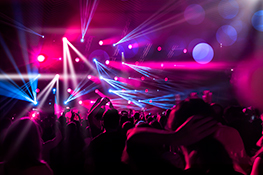RGBW vs. RGBA LED Stage Lighting: Which is Right for You?
Understanding the Color Channels: RGBW vs. RGBA
Choosing the right LED stage lighting can significantly impact the quality of your production. Two popular options dominate the market: RGBW and RGBA. Both systems utilize red, green, and blue (RGB) LEDs to create a vast spectrum of colors through additive mixing. However, the crucial difference lies in the fourth channel: white (W) in RGBW and amber (A) in RGBA. This seemingly small distinction dramatically influences the lighting’s capabilities and suitability for various applications. Let’s delve into the specifics of each system.
RGBW: The Power of Pure White
RGBW LED fixtures incorporate a dedicated white LED alongside the standard RGB LEDs. This offers several advantages. Firstly, it allows for the creation of much brighter, truer whites. Mixing white from RGB LEDs often results in a slightly off-white or pastel shade. A dedicated white LED ensures a clean, crisp white light essential for illuminating actors’ faces, backdrops, or creating a neutral base for other colors. Secondly, it simplifies color mixing, particularly for warmer tones. Achieving a warm white or yellowish hue is often easier and more energy-efficient with a dedicated white LED compared to heavily relying on the RGB mix.
RGBA: The Warmth of Amber
RGBA systems replace the white LED with an amber LED. Amber, sitting between red and yellow in the visible spectrum, adds a distinct warmth and richness to the color palette. This is particularly beneficial for theatrical productions seeking a more natural, nostalgic, or vintage feel. Amber enhances skin tones beautifully, creating a more flattering and realistic appearance. The addition of amber offers a wider range of pastel shades and more nuanced color transitions, enhancing the overall visual complexity and depth.
Comparing the Pros and Cons
To determine which system suits your needs, weigh the following:
RGBW Advantages:
- Brighter, truer whites
- Energy-efficient warm white production
- Simpler color mixing for some shades
- Often more cost-effective
RGBW Disadvantages:
- Limited pastel and warm color options compared to RGBA
- May struggle to replicate some specific skin tones as naturally as RGBA
RGBA Advantages:
- Rich, warm color palette
- Enhanced skin tone rendering
- Greater subtlety in color transitions
- Ideal for creating vintage or theatrical effects
RGBA Disadvantages:
- Achieving bright, true white may require more power and careful color mixing
- Generally more expensive than RGBW fixtures
Choosing the Right System for Your Stage Lighting Needs
The “best” system depends entirely on your specific requirements. For applications prioritizing bright, true whites and cost-effectiveness, RGBW is the logical choice. Think television studios, corporate events, or applications needing strong general illumination. However, for theatre, film, photography, or any application emphasizing rich, warm tones and nuanced color rendering, RGBA shines. Its capacity for creating a wide array of nuanced skin tones and producing a more natural feel often outweighs the higher cost.
Conclusion
Both RGBW and RGBA LED stage lighting systems offer distinct advantages. Understanding the nuances of each system and carefully considering your production’s specific needs will help you make an informed decision. Consider the desired color palette, budget, and the overall aesthetic you aim to achieve. Ultimately, the right choice will significantly enhance the visual impact of your performances or events.


 Auditorium Construction Services
Auditorium Construction Services 